| 3 April |
• yesterday • tomorrow |
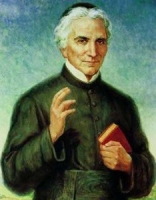
Aloisius, Aloysius
Youngest of three brothers born to Domenico Scrosoppi, a jeweler, and Antonia Lazzarini; his brother Carlo was ordained when Luigi was six, and his brother Giovanni several years later. When Luigi was 11 or 12 years old, his home region was struck by drought, famine, typhus, and smallpox in quick succession; the sight of such misery, complete poverty, and the number of orphans had a lasting effect on the boy.
In his teens, Luigi felt a call to the priesthood, and he entered the same seminary as his brother Giovanni. Deacon in 1826; ordained on 31 March 1827 at the cathedral in Udine; he was assisted at his first Mass by his brothers.
Director of the Pious Union of the Heart of Jesus Christ. Helped manage the children's center run by his brother Carlo. Franciscan tertiary. Assistant director of Carlo's orphanage in 1829. The orphanage fell on harder times than usual; Luigi, in desperation, hit the streets to beg for their support, and the school soon had a great lesson in faith - and enough money to buy their building.
As there were more orphans than space, the brothers decided to enlarge the house; Luigi went through the countryside to beg building materials and labor. Work began in 1834 with Luigi coordinating, begging, supervising, and working construction; it was completed in 1836, and named the House for the Destitute. That year also saw another cholera epidemic, and the orphanages, again, were full.
The need of the orphans, and the constant work of the brother priests, attracted the attention of several area women who were also working with the poor and the abandoned. Among them were Felicita Calligaris, Rosa Molinis, Caterina Bros, Cristina and Amalia Borghese and Orsola Baldasso. These women, under the spiritual direction of Carlo and Luigi, founded what would become the Congregation of Sisters of Providence who taught basic academic subjects and needle crafts. Luigi placed them under the patronage of Saint Cajetan, and the Congregation received final approval from Pope Blessed Pius IX on 22 September 1871.
In 1846 Luigi joined the Oratory of Saint Philip Neri, a congregation devoted to charity and learning; elected provost of the community on 9 November 1856. On 4 October 1854 he finished work on the Rescue Home for abandoned girls. On 7 March 1857 he opened the school and home for deaf-mute girls; sadly, it survived only 15 years. He opened Providence House for his unemployed former students, and he worked in hospitals with the sickest and poorest of patients.
In his later years, Luigi had to combat anti-clerical sentiments that swept through the Italian peninsula during the political unification of the country; many houses and groups, including the Oratory, were seized, closed, and their assets sold off. While he could not save the Oratory or parish property, Luigi did protect his charitable institutions, and saw the Congregation grow and spread.
4 August 1804 at Udine Italy
3 April 1884 at Udine Italy of fever and the postulant skin disease pemphigus
• 10 June 2001 by Pope John Paul II
• his canonization miracle was the cure of a Zambian AIDS victim, Peter Changu Shitima in 1996
The poor and the sick are our owners and they represent the very person of Jesus Christ. - Saint Luigi
The legacy of Saint Luigi Scrosoppi, carefully maintained by his spiritual daughters, is rich and precious for the entire People of God, above all, for priests. In fact, he was a model of priestly life lived in the constant search for God. Saint Francis of Assisi and Saint Philip Neri were the guides whom he followed with enthusiasm in order to be conformed in everything to Christ our Savior. Humility, poverty, simplicity; prayer, contemplation, intimate union with Christ: these were the inexhaustible sources of his charity. May his luminous example attract not just his spiritual daughters and the devout, but all those who come into contact with the work he began. - Pope Saint John Paul II, 11 June 2001
https://catholicsaints.info/saint-luigi-scrosoppi-of-udine/
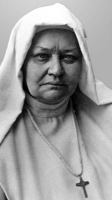
Sister Maria Serafina of the Heart of Jesus Pierced
29 October (Oblate Sisters of the Sacred Heart of Jesus; diocese of Frascati, Italy; based on the date of her baptism)
Born to a wealthy family, the eldest daughter of Tommaso Casini, an engineer, and Melania Rayner, she was baptized at the age of two days at the cathedral of Frascati, Italy. Her father died when Teresa was about ten years old, and she and her mother moved in with her maternal grandparents. In 1875 she began studying at the school at Santa Rufina in Rome, Italy, which was run by Society of the Sacred Heart nuns. Teresa early felt a call to religious life, and though she had a number of set-backs due to health problems, and faced some family opposition, she entered Poor Clare Sepolte Vive monastery in Rome on 2 February 1885, taking the name Sister Maria Serafina of the Heart of Jesus Pierced.
Poor health caused her to leave the cloister on 2 December 1886. She returned to her family, and spent as much time as she could in prayer in the chapel of the Sacred Heart in the parish church of San Rocco in Frascati. The church and chapel were badly neglected, and Sister Maria worked to restore them. All the while, she kept hearing in inner voice calling her to console the sufferings of the Heart of Jesus, particularly those caused by faithless or undisciplined priests. With this as her goal, and on the advice of her spiritual director, she became part of the community called True Lovers of the Heart of Jesus. When the group's leader died, Sister Maria gathered everal like-minded sisters, and using her inheritance, on 2 February 1894 she founded the Victims of the Sacred Heart as a cloistered community. They received diocesan approval on 1 April 1896.
With the encouragment of their bishop, Cardinal Francesco Satolli, in the early 20th century the Victims moved from being a clositered order to an active one, working to help priests in their parishes. They founded a school for girls in 1910. On 1 November 1916 changed its name to the Oblate Sisters of the Sacred Heart of Jesus to better reflect their status and mission. In 1925 she starting working with the Little Friends of Jesus, which educated boys, helped support vocations, and later expanded to assist priests with health problems.
Late in 1925 Mother Maria's health collapsed completely, and she was eventually paralyzed for the final decade of her life. She never stopped working, running the Sisters from bed, meeting, teaching and consoling sisters, priests and seminarians until the end. The Oblate Sisters continue their good work today, assisting and supporting priests and vocations in Italy, the United States, Brazil, Peru and Guinea-Bissau.
27 October 1864 in Frascati, Italy
• around 5am on 3 April 1937 at Oblate monastery on the via del Casaletto in Grottaferrata, Rome, Italy of natural causes
• buried in the chapel of the Zealots of the Sacred Heart in a nearby cemetery
• re-interred at the Generalate of the Oblates of the Sacred Heart in Grottaferrata on 20 May 1965
• 31 October 2015 by Pope Francis
• beatification recognition celebrated at the Piazza San Pietro at the cathedral in Frascati, Italy, presided by Cardinal Angelo Amato
• her beatification miracle involved the 25 – 27 June 2003 healing of the brain lesions and trauma of Jacob “Jack” Ronald Sebest, a five year old drowning victim in Youngstown, Ohio
Oblates of the Sacred Heart of Jesus
I am peaceful. I feel God is near me. – Blessed Maria's last words
A contemplative and missionary woman, she made her life an offering of prayer and concrete charity in support of priests. We thank the Lord for her testimony. – Pope Francis at the Angelus on the date of Madre Maria's beatification
https://catholicsaints.info/blessed-maria-teresa-casini/
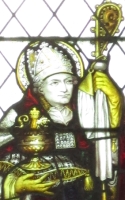
• Richard de Wych
• Richard Backedine
• Richard of Wich
Second son of Richard and Alice de Wych. His father died when the boy was young. The family fell upon hard times, but as soon as he became old enough, Richard took over management of their estates and brought them back to profit. Educated at Oxford, England, in Paris, France, and in Bologna, Italy. Chancellor of Oxford University. Legal advisor to Saint Edmund Rich and Saint Boniface of Savoy, the Archbishops of Canterbury. Priest. Bishop of Chichester. Miracles and cures occured at his shrine in Chichester. His patronage of coachmen began with the Milanese Guild of Coachmen, possibly because Richard drove carts and wagons on the family farm.
c.1197 at Droitwich, Worcestershire, England as Richard de Wych
3 April 1253 at Dover, Kent, England of natural causes
1262 by Pope Urban IV at Viterbo, Papal States (part of modern Italy)
• coachmen
• diocese of Chichester, England
• Sussex, England
• bishop with a chalice on its side at his feet because he once dropped the chalice during a Mass and nothing spilled from it
• kneeling with the chalice before him
• ploughing his brother's fields
• a bishop blessing his flock with a chalice nearby
Thanks be to Thee, my Lord Jesus Christ For all the benefits Thou hast given me, For all the pains and insults Which Thou has borne for me. O most merciful Redeemer, Friend, and Brother, May I know Thee more clearly, Love Thee more dearly, Follow Thee more nearly, Day by day. Amen." - prayer by Saint Richard
https://catholicsaints.info/saint-richard-of-chichester/
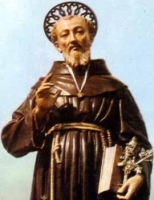
• Gandulphus Sacchi
• Gandulphus of Polizzi Generosa
• Gandulphus of Polizzo
• Gandolf, Gandolfo, Gandulf
relics processed in Polizzi Generosa, Italy on the 3rd Sunday of September
Born to the nobility, a member of the wealthy and powerful Sacchi family. He joined the Franciscans while Saint Francis was still alive, and made his final vows c.1224. Priest. Father Gandulphus spent his life praying and preaching throughout Sicily. Founded the Franciscan convent at Termini Imerese, Italy in 1256. He cured a young mute man outside Polizzi Generosa, Italy in 1260 which led to his preaching having great affect on the local people.
c.1200 at Binasco, Lombardy, Italy
• Holy Saturday 3 April 1260 at the San Nicolò Hospital in Polizzi Generosa, Sicily, Italy of natural causes
• legend says that birds gathered to sing in the church where his body was laid out
• relics enshrined in a wooden reliquary in Polizzi soon after his death
• relics re-enshrined in a marble ark in 1482
• relics re-enshrined and the reliquary covered in silver leaf in 1549
10 March 1881 by Pope Leo XIII (cultus confirmation)
Polizzi Generosa, Italy (chosen by citizens and confirmed in 1320)
https://catholicsaints.info/blessed-gandulphus-of-binasco/
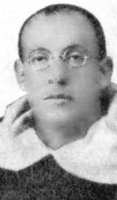
Juan de Jesús y María
Member of the Trinitarians, beginning his novitiate at the Shrine of Bien Aparecida in Cantabria, Spain, and making his simple vows on 11 October 1914. He studied at several convents, and made his final profession on 17 May 1918 in Cordoba, Spain. Ordained a priest in Madrid, Spain on 23 October 1921, he began to serve at the church of Sant’Ignazio de Loyola dei vaschi. A musician familiar with several instruments, Father Juan was an excellent cello player.
On 13 March 1936, the church was burned by anti–Christian forces in the Spanish Civil War. The Trinitarians left their convent, sought shelter with locals, and Father Juan was assigned to the Sanctuary of the Virgin of Cabeza. On 28 July 1936 the Trinitarians were expelled from the Sanctuary by Communist forces, and Juan found shelter with the Duke de la Quinteria in Andújar, Spain. In the spring of 1937, the Communists imprisoned him, tried him for the crime of being a priest, sentenced him to 20 years in prison, but decided instead to execute him for the offense of his vocation. Martyr.
8 February 1895 in Rigoitia, Vizcaya, Spain
shot at dawn on 3 April 1937 in the cemetery of Mancha Real, Jaén, Spain
28 October 2007 by Pope Benedict XVI
https://catholicsaints.info/blessed-juan-otazua-y-madariaga/
• Liutberga of Michaëlstein
• Liutberga of Rosstreppe
• Liutberga of Thale
• Liutberga of Wendhausen
• Leutpurga, Liudbirg, Liutbirg, Liutbirga, Liutburga, Luitberga, Luitburg, Lutberga, Lutbirg
Born to the nobility, related to Duke Hessi of Ostfalen. Noted by the nobles for her exceptional skill at managing the estates and houses of her family, and by the poor for her almsgiving and care for the sick and dying as she travelled from estate to estate. She spent her days managing the estates and caring for the needy, and her nights in prayer. In her later years, she retired to the convent at Wendhausen, Germany and with the approval of Bishop Thiatgrim von Halberstadt, eventually was locked into a cell next to the church of the cloister, and lived the rest of her life as an anchoress, praying, doing penance, and giving wisdom and spiritual training to any who visited her, rich and poor, lay, ordained and consecrated. Reported to have had the gift of prophesy. A monk of her aquaintance was so impressed by her piety that he wrote a biography of her soon after her death.
in Solszburg in the area of Sulzgau, Bavaria (in modern Germany)
of natural causes in Thale near Magdeburg in Saxony-Anhalt (in modern Germany) on 3 April; the year is variously recorded as 863, 865, 876, 882 or sometimes just c.870
https://catholicsaints.info/saint-liutberga-of-windenhausen/
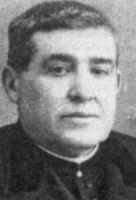
Born to a poor and pious family. Ordained a priest in the diocese of Jaén, Spain on 22 December 1900. Served six years in the parish of Santiago Apóstol in Valdepeñas de Jaén, Spain while earning a degree in theology. Known in all his postings as "a learned, zealous and pious pastor". Archpriest of Mancha Real, Spain in 1914. Founded a Catholic Union. Established men's and women's branches of Catholic Action. Imprisoned with other priests and parishioners at the outbreak of the anti–Christian persecutions of the Spanish Civil War, Father Francesco ministered as best he was allowed to the physical and spiritual needs of his fellow prisoners. Sentenced to death for the crime of being a priest, he was the last of his group of prisoners to be murdered as none of the men wanted to shoot him; he took advantage of this to hear confessions and give absolution to the other prisoners. Martyr.
9 July 1877 in Marmolejo, Jaén, Spain
• shot at dawn on 3 April 1937 in the parish cemetery of Mancha Real, Jaén, Spain
• body dumped into a common grave in the cemetery
• 27 October 2013 by Pope Francis
• beatification recognition celebrated at Tarragona, Spain
https://catholicsaints.info/blessed-francisco-solis-pedrajas/
Lorenzo Pak Chwi-deuk
20 September as one of the Martyrs of Korea
Layman convert to Christianity in the apostolic vicariate of Korea. Zealous about his new found faith, he learned the catechism, then returned to his home village to try to convert his family and neighbors. When the anti–Christian Sinhae persecutions began in 1791, he protested the arrest of other Christians, and visited them in prison; for this, he was imprisoned for several weeks. When the anti–Christian Jeongsa persecutions began in 1797, Lawrence was ordered arrested; he went into hiding, but when the persecutors arrested his father in his place, Lawrence surrendered. He was imprisoned for two years and repeatedly tortured; records indicate that, along with other forms of torture, he received over 400 beatings. When the authorities questioned him, he would simply explain points of Catholic doctrine no matter what they had asked him. They finally gave up trying to break him, and simply killed him instead. Martyr.
c.1769 in Myeoncheon, Chungcheong-do, South Korea
hanged on 3 April 1799 in Hongju, Chungcheong-do, South Korea
16 August 2014 by Pope Francis at Gwanghwamun Square, Seoul, South Korea
https://catholicsaints.info/blessed-laurentius-pak-chwi-deuk/
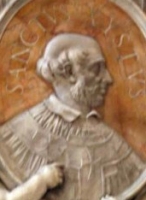
Xystus I
Little known about his life before he was chosen seventh pope in 116. He concerned himself with the liturgy, and instituted elements still in use today. He decreed that only priests may touch the sacred vessels, that bishops returning from the Apostolic See to their dioceses must present Apostolic letters, and that the priest shall recite the Sanctus with the people during the Mass. Reigned during the persecutions of the Roman emperor Trajan. Martyr.
Rome, Italy
116
125 in Rome, Italy
• Alife-Caiazzo, Italy, diocese of
• Anagni-Alatri, Italy, diocese of
• Alatri, Italy
• Alife, Italy
https://catholicsaints.info/pope-saint-sixtus-i/
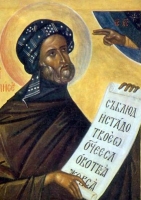
Joseph of the Studium
Born to Christian parents. He fled Sicily in 830 due to Arab invasion, and became a monk in Thessalonica. He joined the monastery of the Studium in Constantinople, but was forced to flee Constantinople in 841 due to iconoclast persecution. On his way to Rome, Italy he was captured by pirates and spent several years as a slave in Crete. He ministered to his fellow slaves, converting many. He finally managed to escape and return to Constantinople where he founded a monastery. When he opposed the Iconoclast emperor Theophilus, Joseph was exiled to the Chersonese. Bishop of Salonica. One of the great liturgical poets and hymnists of the Byzantine Church, credited with approximately 1,000 works.
c.810 in Sicily
886 of natural causes
https://catholicsaints.info/saint-joseph-the-hymnographer/
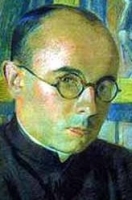
Peter Edward Dankowski
12 June as one of the 108 Martys of World War II
Priest in the Archdiocese of Kraków, Poland. Vicar of the parish of Zakopane, he was known for his service to the people, especially the poor. During World War II he helped escapees hiding from the Nazis. Arrested in May 1941 and sentenced to the extermination camp in Oswiecim (Auschwitz). Martyr.
21 June 1908 in Jordanów, Malopolskie, Poland
Good Friday, 3 April 1942 in Oswiecim (Auschwitz), Malopolskie, Poland
13 June 1999 by Pope John Paul II in Warsaw, Poland
See you in the kingdom of God! - Blessed Piotr's dying words
https://catholicsaints.info/blessed-piotr-edward-dankowski/
Ubricius, Urbice, Urbicus, Urbique, Urbitius
Born a member of an imperial Roman senatorial family, Urbicius was drawn to the Church and lived a pious married life. His reputation for learning and piety led to him being chosen the second bishop of the diocese of Clermont in the Auvergne region of modern France in 288; his wife entered a convent and he went to his diocese. However, his wife was unsatisfied with her new life, left the convent, returned to Urbicius and said she did not wish to give up married life. Seeing her, Urbicius realized how much he had missed her, and let her move in with him; they told people she was his sister who was there to keep house for him. The bishop‘s conscience soon got the best of him, and he left both wife and diocese to live in penance in a nearby monastery.
c.312 of natural causes
https://catholicsaints.info/saint-urbicius-of-clermont/
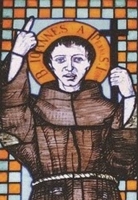
• Juan de Pina
• Juan da Penna San Giovanni
• Giovanni, Johannes
31 October (Franciscans)
Joined the Franciscan in Recanati, Italy c.1213. Priest. Founded several Franciscan houses in Provence, France during a 25 year apostolate there. Returned to Italy in 1242, and lived the bulk of his remaining 30 in cloistered retirement. Experienced many highs and lows in his spiritual life, with lengthy periods of aridity and doubt, but periods of ecstacies, visions, and mystic union. Had the gift of prophecy.
c.1193 at Penna San Giovanni, diocese of Fermo, Italy
3 April 1271 at Recanati, Italy
20 December 1806 by Pope Pius VII (cultus confirmed)
https://catholicsaints.info/blessed-john-of-penna/
A group of young Christian men who protested to city authorities that gifts to temples of pagan gods should be used to feed the poor during a regional famine. When the officials refused, the group went to local temples, broke up the idols and fixtures, and gave the gold and silver bits to the poor to use to buy food. The group was imprisoned and executed. The only other thing we know about these martyrs are the names – Bythonius, Elpideforus, Dius and Galycus
3rd century at an unknown location in Greece
https://catholicsaints.info/martyrs-of-greece-3-april/
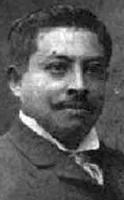
Married layman and father in the archdiocese of Guadalajara, he worked as a mechanic. Brother of Blessed José Luciano Ezequiel Huerta-Gutiérrez. Noted for his devotion to the Eucharist and attendance at daily Mass. Imprisoned, tortured and executed in the persecutions of the Mexican Revolution. Martyr.
18 March 1880 in Magdalena, Jalisco, Mexico
shot on 3 April 1927 in the cemetery in Mezquitán, Jalisco, Mexico
20 November 2005 by Pope Benedict XVI
https://catholicsaints.info/blessed-jose-luciano-ezequiel-huerta-gutierrez/
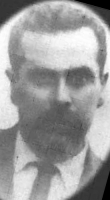
Married layman and father in the archdiocese of Guadalajara, he worked as a mechanic. Brother of Blessed José Luciano Ezequiel Huerta-Gutiérrez. Noted for his devotion to the Eucharist and attendance at daily Mass. Imprisoned, tortured and executed in the persecutions of the Mexican Revolution. Martyr.
18 March 1880 in Magdalena, Jalisco, Mexico
shot on 3 April 1927 in the cemetery in Mezquitán, Jalisco, Mexico
20 November 2005 by Pope Benedict XVI
https://catholicsaints.info/blessed-jose-salvador-huerta-gutierrez/
Thurstan Greenlow
• 29 October as one of the Martyrs of Douai
• 22 November as one of the Martyrs of England, Scotland, and Wales
Priest in the apostolic vicariate of England. Martyred in the persecutions of Queen Elizabeth I.
c.1555 Carlton Hall, Leeds, West Yorkshire, England
late March 1601 in Lancaster, Lancashire, England
22 November 1987 by Pope John Paul II
https://catholicsaints.info/blessed-thurstan-hunt/
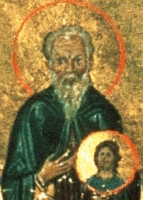
• Nicetas of Constantinople
• Nicetas the Confessor
• Niketas, Nikita
Monk and abbot of Medicion Abbey in Bithynia (in modern Turkey). He and his brother monks suffered in the persecutions of iconclast Emperor Leo, and he was imprisoned for many years.
Bithynia (in modern Turkey)
824 of natural causes
https://catholicsaints.info/saint-nicetas-of-medicion/
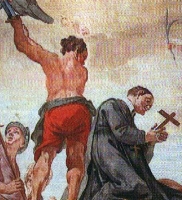
Tientone
Benedictine monk. Abbot of Saints Peter and Paul abbey at Wessobrunn in Bavaria (in modern Germany). Martyred along with six of his brother monks by invading Hungarians.
955 in Wessobrunn, Bavaria, Germany
https://catholicsaints.info/saint-thiento-of-wessobrunn/
22 November as one of the Martyrs of England, Scotland, and Wales
Jesuit priest in the apostolic vicariate of England. Martyred in the persecutions of Queen Elizabeth I.
1571 in York, North Yorkshire, England
late March 1601 in Lancaster, Lancashire, England
22 November 1987 by Pope John Paul II
https://catholicsaints.info/blessed-robert-middleton/
Jacob
20 September as one of the Martyrs of Korea
Layman martyr in the apostolic vicariate of Korea.
1730 in Hongju, Chungcheong-do, South Korea
3 April 1799 in Cheongju, Chungcheong-do, South Korea
15 August 2014 by Pope Francis
https://catholicsaints.info/blessed-iacobus-won-si-bo/
Joined in the Poor Clares at age 15. Founded a Poor Clare convent in Foligno, Italy in 1423, served as its first abbess. Known for her reforms that emphasized Franciscan spirituality, she has the support of Pope Martin V.
in 1385 in Sulmona, Italy
1458 of natural causes
https://catholicsaints.info/blessed-alexandrina-di-letto/
Ulfianus, Ulpian, Ulpiano, Ulpianus, Vulpianus
Martyred in the persecutions of Diocletian and Maximian Galerius.
Syria
sewed up in a leather sack with a serpent and a dog and then thrown into the sea to drown in 304 at Tyre, Lebanon
https://catholicsaints.info/saint-vulpian-of-tyre/
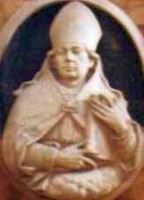
Fifth-century bishop of Naples, Italy. Translated the body of Saint Januarius to Naples.
Campania, Italy
Holy Saturday night in 432 of natural causes
https://catholicsaints.info/saint-john-i-of-naples/
Illyricus Thaumaturgos
Monk. Hermit on a mountain near Pyrgos, Elis, Greece where his reputation for holiness, and as a miracle worker, caused many other monks to seek him out as a spiritual teacher.
https://catholicsaints.info/saint-illyricus-the-wonder-worker/
Agathon
Convicted of possessing the Scriptures despite a prohibition issued in 303 by Emperor Diocletian. He was ordered to sacrifice to pagan gods; he refused. Martyr.
c.304 in Thessalonica, Greece
https://catholicsaints.info/saint-agatho-of-thessalonica/
Widow. During the persecutions of Diocletian and governor Dulcetius, Eutychia was exposed as a Christian when she refused to eat meat that had been sacrificed to idols. Martyr.
c.304 in Thessalonica, Greece
https://catholicsaints.info/saint-eutychia-of-thessalonica/
Convicted of possessing the Scriptures despite a prohibition issued in 303 by Emperor Diocletian. She was ordered to sacrifice to pagan gods; she refused. Martyr.
c.304 in Thessalonica, Greece
https://catholicsaints.info/saint-philippa-of-thessalonica/
Convicted of possessing the Scriptures despite a prohibition issued in 303 by Emperor Diocletian. She was ordered to sacrifice to pagan gods; she refused. Martyr.
c.304 in Thessalonica, Greece
https://catholicsaints.info/saint-casia-of-thessalonica/
Mentioned in early Irish martyrologies, but no details about him have survived.
Kilcooley (Cill-Chuile; Kill-Chuile), County Roscommon, Ireland
https://catholicsaints.info/saint-benatius-of-kilcooley/
Attalus of Taormina
Benedictine monk and then abbot of a monastery in Taormina, Sicily.
c.800
https://catholicsaints.info/saint-attala-of-taormina/
Martyr.
Nicomedia, Bitynia (in modern Turkey)
https://catholicsaints.info/saint-donatus-of-nicomedia/
Martyr.
1st century Mysia (in modern Turkey)
https://catholicsaints.info/saint-agathamerus-of-mysia/
Son of Domangen. Listed in the 9th century Irish martyrologies, but no other information has survived.
https://catholicsaints.info/saint-comman/
Nine Christians who were martyred together. We know nothing else about them but the names – Arestus, Benignus, Chrestus, Evagrius, Papo, Patricius, Rufus, Sinnidia and Zosimus.
at Tomi, Scythia (modern Constanta, Romania)
https://catholicsaints.info/martyrs-of-tomi-3-april/
CatholicSaints.Info Portable Edition